"The bells they sound so clear" - A.E. Housman on Bredon Hill, Worcestershire
The hill beloved of poets and artists, bristling with ancient fortifications, castles and follies
As we drive to Bredon Hill someone says, “isn’t there a poem about this hill?”
It turns out A.E. Housman -- one of my favourite poets -- was just one of many to have elegised the hill, but his poem is the first Google throws up.
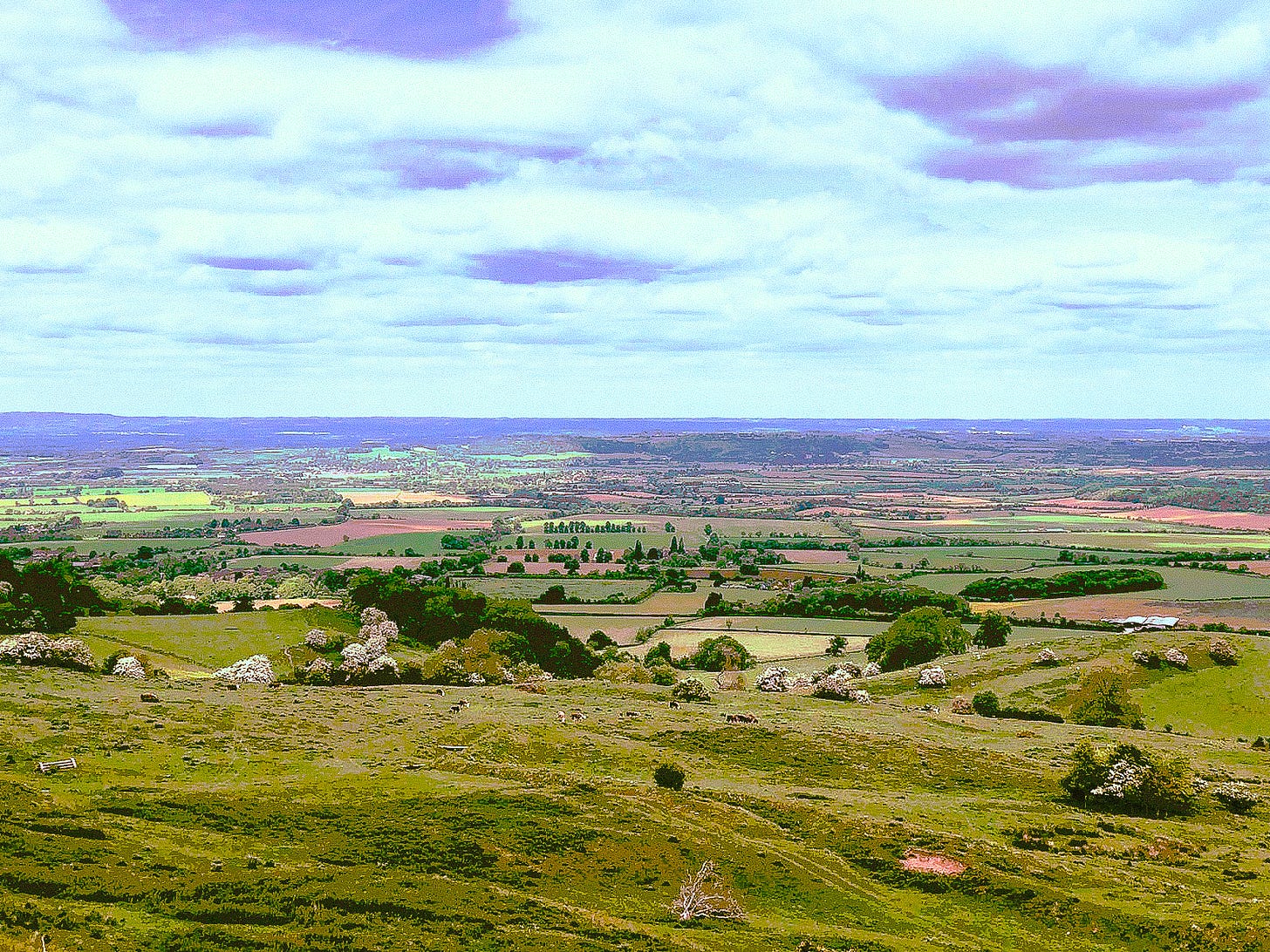
Here of a Sunday morning
My love and I would lie,
And see the coloured counties,
And hear the larks so high…
—A.E. Housman, ‘Bredon Hill’
Housman was born in Bromsgrove, a town in north Worcestershire, but he normally writes about Shropshire, another hilly area a good sixty miles to the north of Bredon.
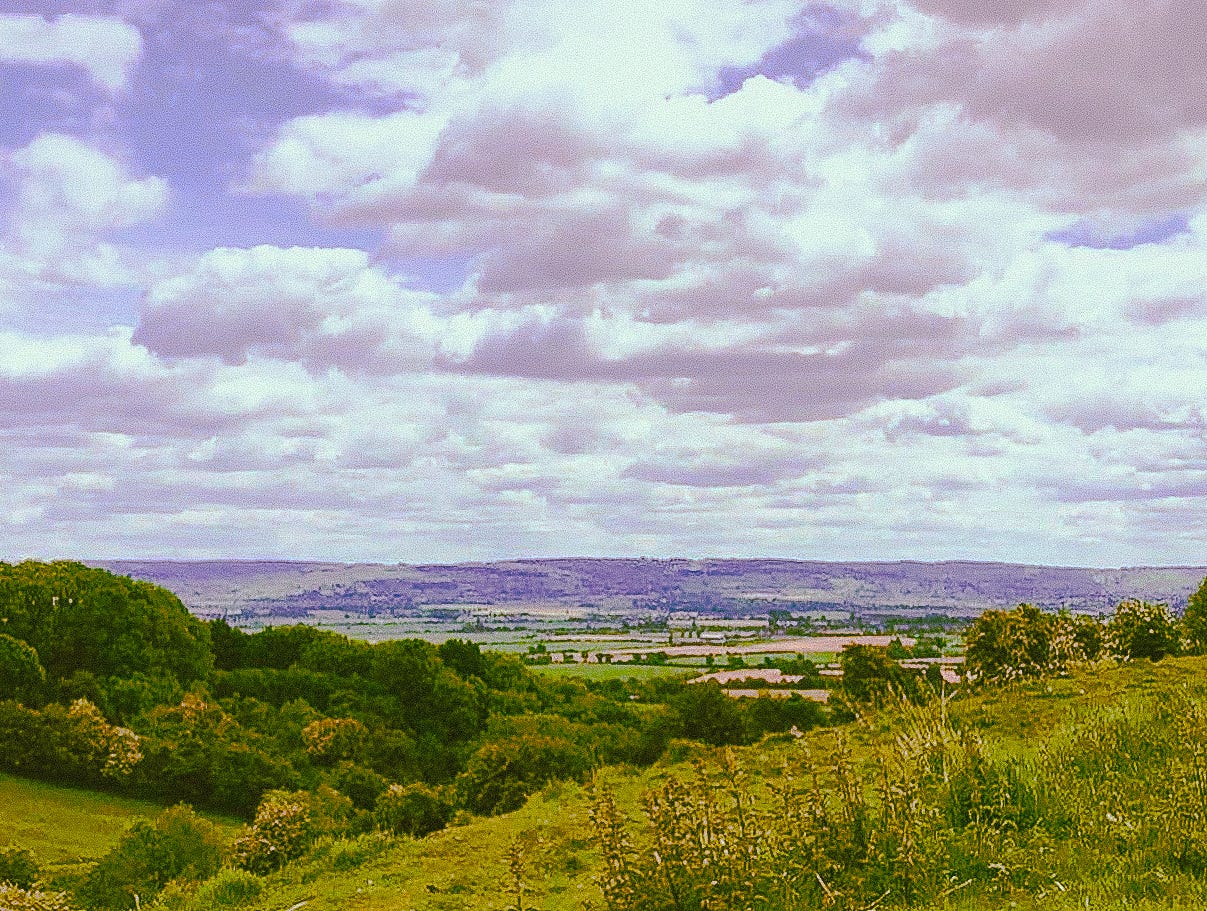
View from Bredon’s south slopes, looking towards the Cotswold escarpment.
Like most of Housman’s poems, it’s a mourning for a lost — in this case, dead — lover.
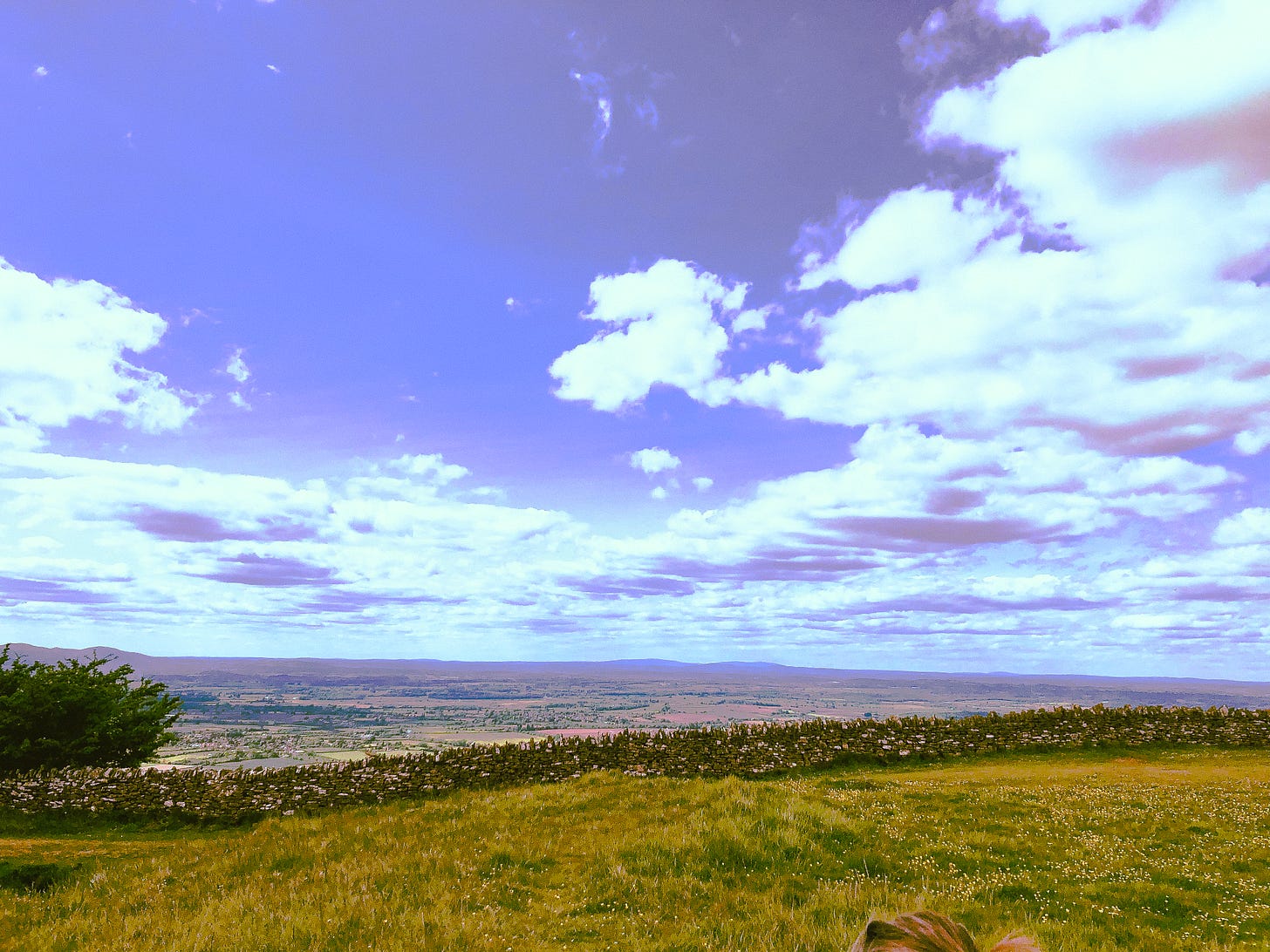
On top of Bredon Hill; looking east.
But what’s striking about the poem as we climb slowly up the steep sides of the hill is its evocation of the sense of space:
The bells they sound so clear;
Round both the shires they ring them
In steeples far and near,
A happy noise to hear.
On top, the cloak of fields stretches away, draped over the humps of distant hills: the Cotswolds to the immediate south; then, to the west, the slow blue line of the Black Mountains, the steep skid down into Hay-on-Wye; to the immediate north, the Malverns’ spiky spine; then, more distantly, hummocks that we speculate could be Lickey and Clent, Cannock Chase, or even Brown Clee of Housman’s beloved Shropshire.
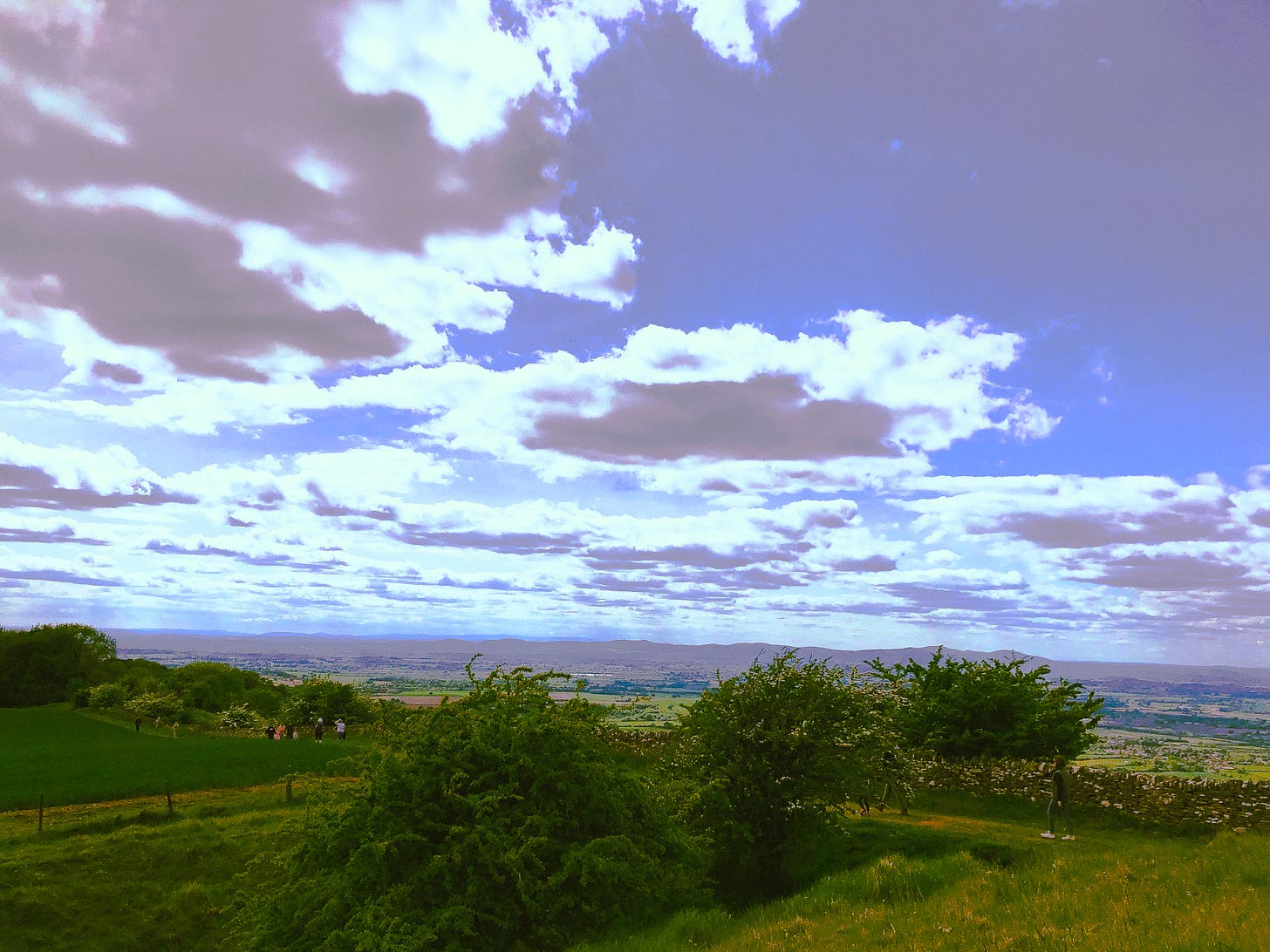
Summit of Bredon Hill; looking slightly north-west, the Malverns just visible behind the rightmost hawthorn bush.
Housman went to the boys’ school adjacent to mine; we also, strangely, attended the same college at university. I remember spending long library nights with eyes peeled in front of a locked filigree-fronted cabinet embossed with his name: his books, that he’d left to the college upon his death. A Shropshire Lad was the first poetry book I owned as a young teenager; the first poems I really loved. How could I resist repeating them in my head as I tramped over Wenlock Edge or the Long Mynd on Scout expeditions: the first time that I became romantic about hills?
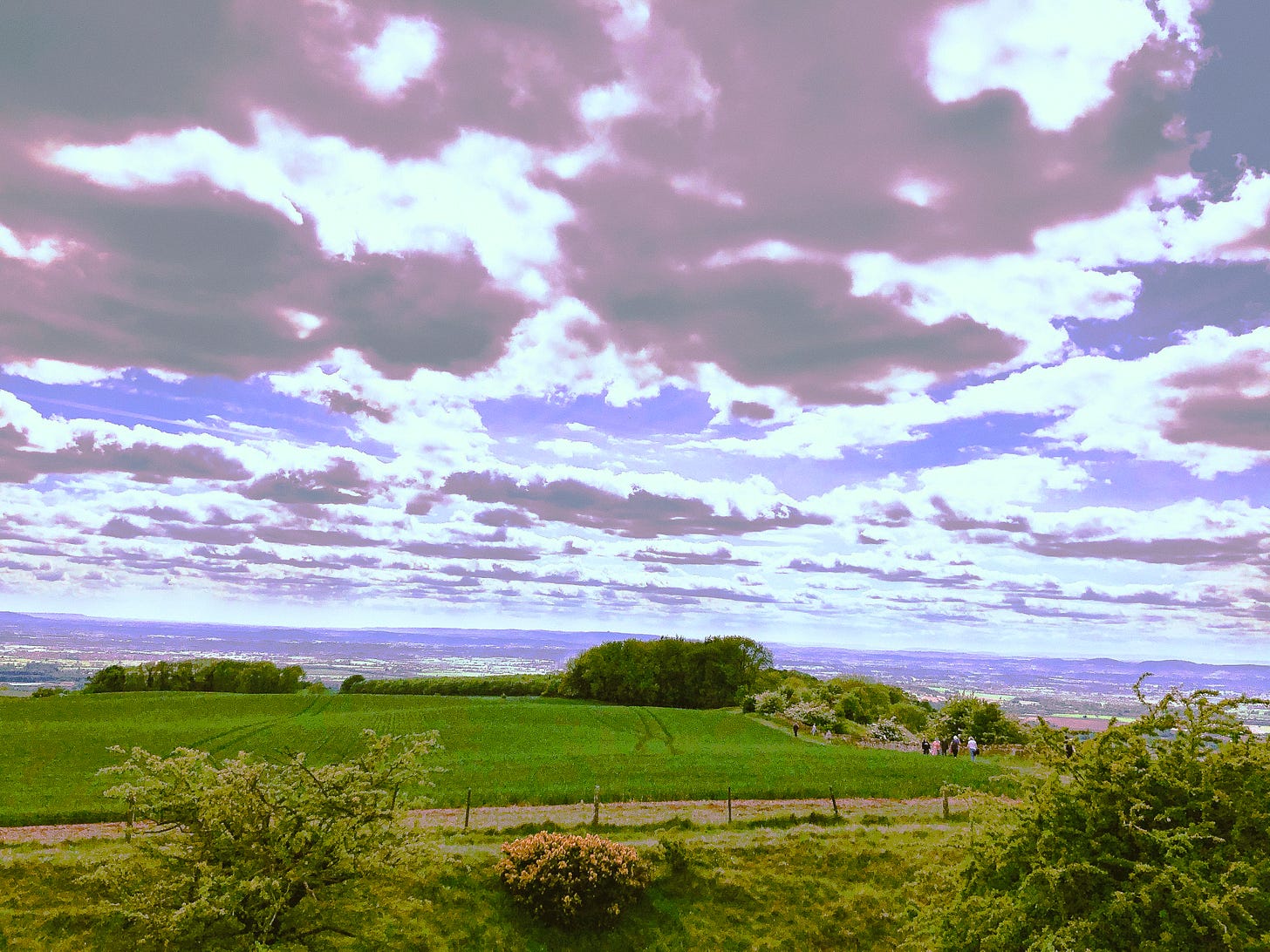
Summit of Bredon Hill; looking west, the Black Mountains just visible on the horizon.
So if reading his poetry is like reading a map of my emotional life, being on top of Bredon Hill is surveying that landscape in the flesh. The camping trip we took when I was a child on a sweltering weekend beneath Broadway Tower; the day walks we used to take in the Black Mountains, on the flanks of which -- as I wasn’t then aware -- sat my now-husband’s family farm; the Malverns, site of endless day walks and childhood trips to the Three Counties Fair; Lickey and Clent, at the end of the bus line from school, where we went on Geography field trips to measure the girth of trees; a similar field trip wading knee-deep into the river on a freezing January day at Church Stretton; Cannock Chase, site of an almost perfect ring-shaped Iron Age fort where I twice took part in a day-long event to walk forty miles. There isn’t a single hill in this vista I haven’t been on top of.
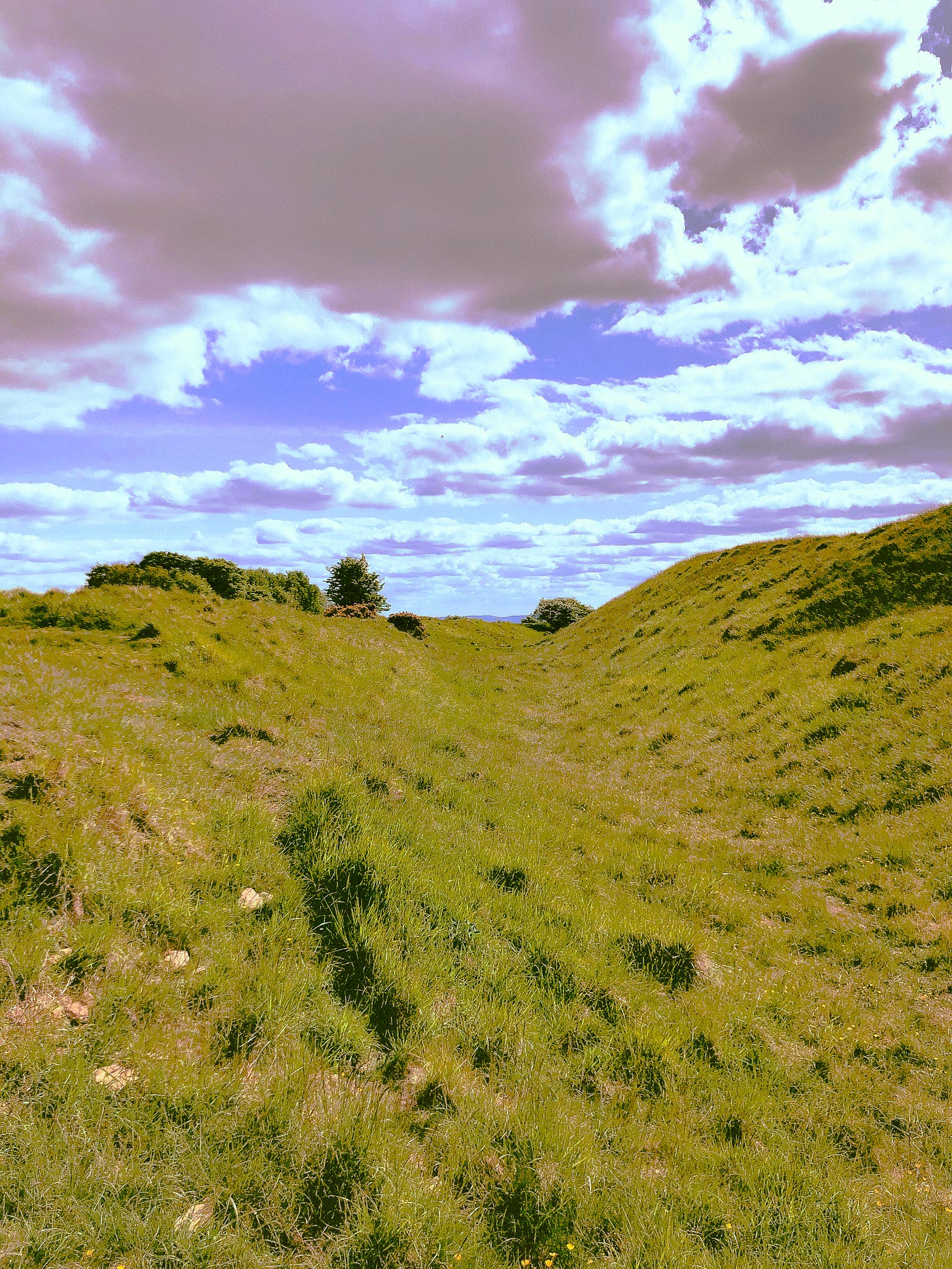
Iron Age earthworks on the summit of Bredon Hill.
As you might expect, our ancestors made full use of such a vantage point. The summit of Bredon is ringed with at least two layers of banked Iron Age fortifications, a steep-sided moat between. Scrambling up it requires hands and knees. There are other forts on other aspects of the hill; we sat above one overlooking the south slopes, towards Broadway, to eat our lunch, and watched a herd of deer leap the bank. A few years ago, Worcestershire’s biggest Roman hoard was discovered by metal detectors atop the hill: it contained coins from 16 emperors, and is thought to have been buried in 350AD. There was a village inside the remains of the fort until Saxon times, although it seems to then have been abandoned, garnering no mention in the Domesday Book.
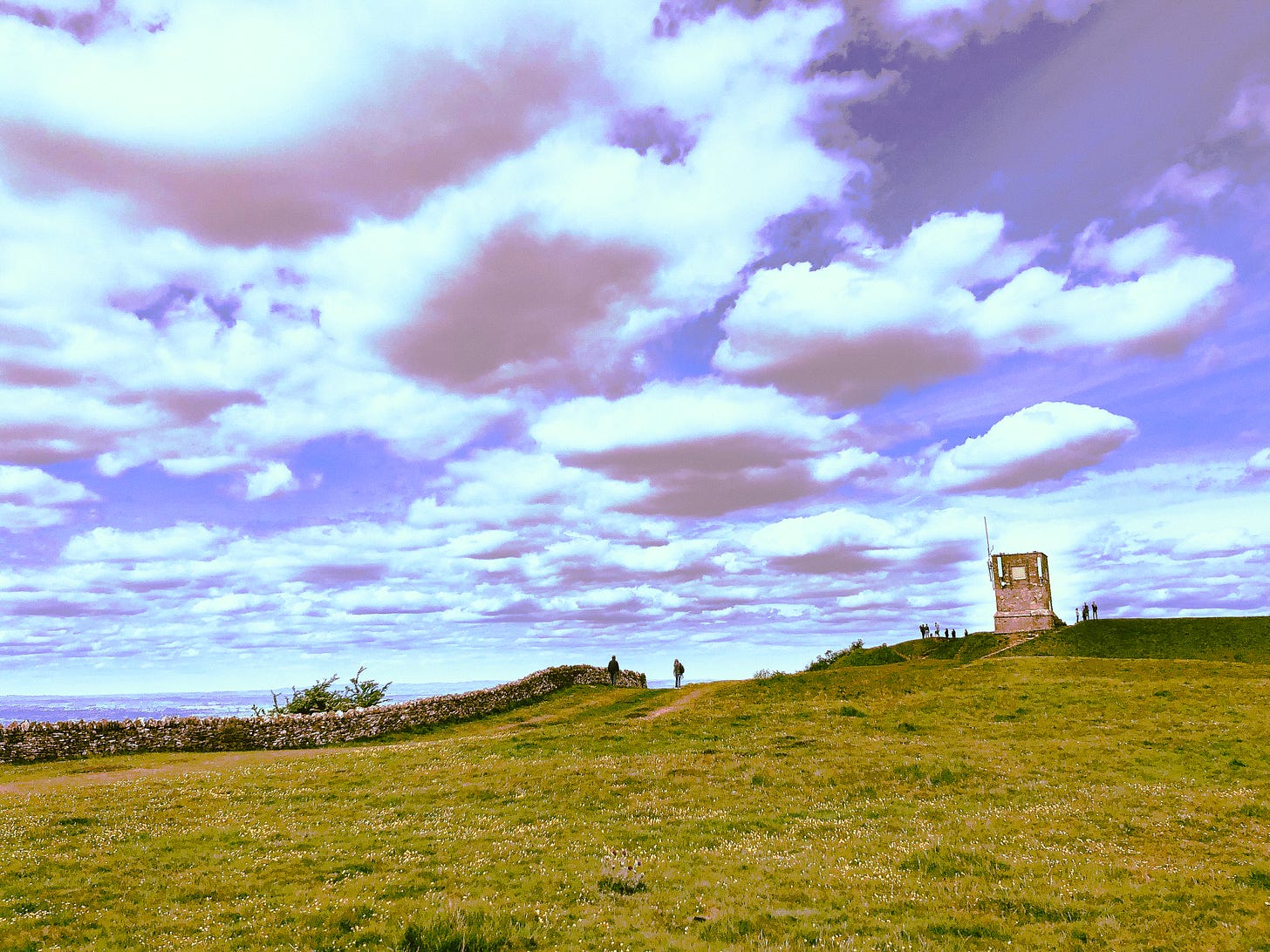
Summit of Bredon Hill, looking towards Parson’s Folly.
Also perched on the summit is a strange cuboid tower known as ‘Parson’s Folly’, built as a summer house for one of two potential Parsons of Kemerton in the 18th century. Now fitted on the outside with mobile phone masts, it is said to have been home to the hill’s only inhabitant since that time: a hermit who lived there until the Second World War.

Phoebe and Herbie, our dogs.
Halfway down the slope towards the village of Elmley Castle, where we parked the car, sit the remains of a mediaeval castle within more ancient earthworks, once home to the Earls of Warwick.
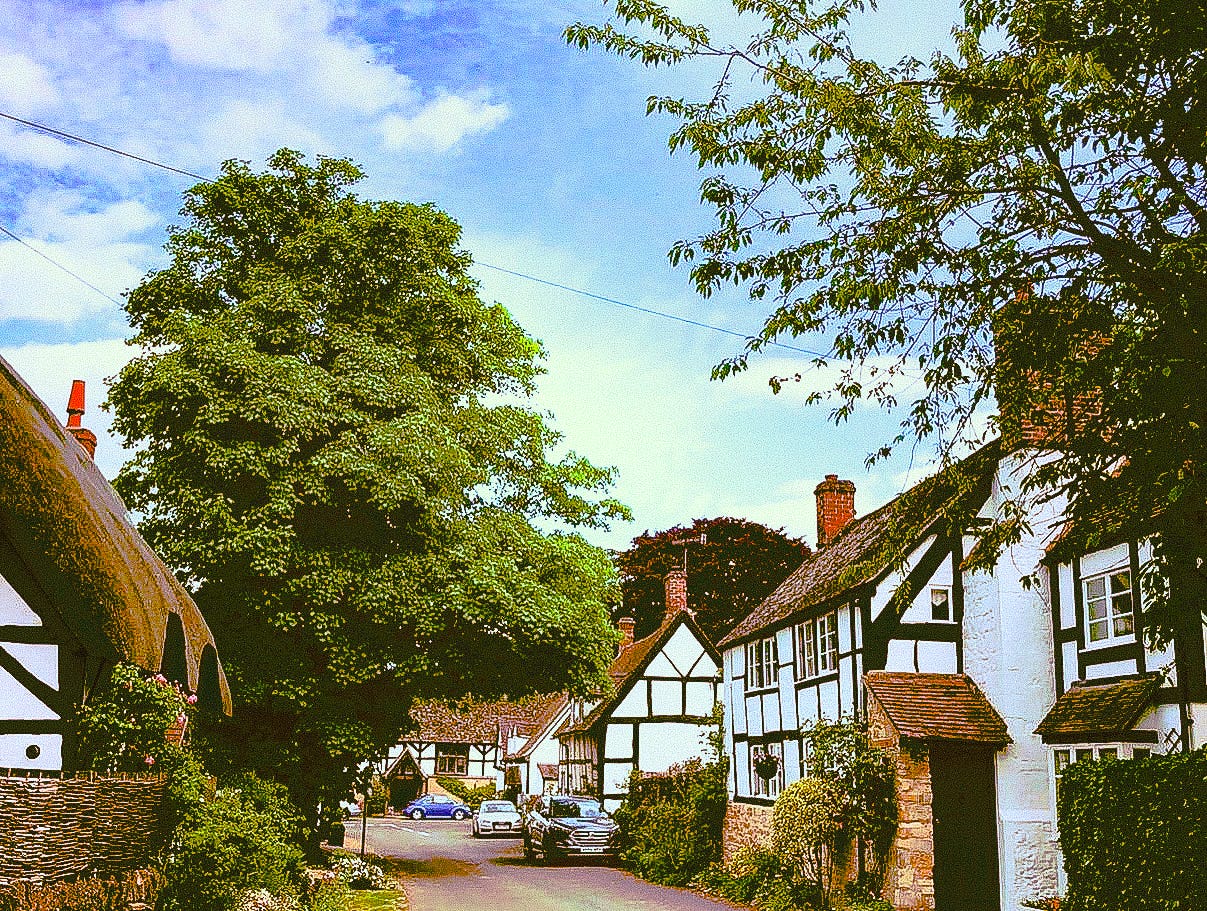
The village of Elmley Castle, just below Bredon Hill.
There are also several standing stones on the hill, all of which I managed to miss, including the Banbury Stone which is apparently near the summit. There were quite a few people around on the sunny May Saturday, just after the slight relaxation of lockdown. Everyone was observing social distancing. The King and Queen Stones are a pair of stones just below the top which, if you pass between them, are said to heal you from illness. Perhaps they are enjoying a resurgence in interest.
I’ll have to be more observant on my next visit.
Current mood: some cultural titbits I’ve been enjoying this week —
Poetry: Mercian Hymns, Geoffrey Hill. My first time reading Geoffrey. Also a Bromsgrove man. In these poems he rhapsodises Offa (he of the dyke), the great Anglo-Saxon Mercian king, intertwined with the landscape of his own childhood. Hill doesn’t fear being serious; sometimes thunderous in tone, at other times with the lightest of touches.
He swayed in sunlight, in mild dreams. He tested the little pears. He smeared catmint on his palm for his cat Smut to lick. He wept, attempting to master ancilla and servus.
— Geoffrey Hill, Mercian Hymns X
Film: Local Hero. A tender and slightly surreal portrayal of a US oil man’s attempt to buy up a remote Scottish community. He falls in love with the place, but that’s about all that’s predictable about the film. The setting is a cuddlier version of Summerisle (of classic Hebridean horror the Wicker Man). A meteor-obsessed CEO infuses Spielberg-esque wonder. Original soundtrack by Mark Knopfler.
Please send me your comments, thoughts, feedback and recommendations! You can reach me on Twitter or Instagram and I’d love to hear from you.
If you enjoyed reading, please consider subscribing, or sharing this newsletter with a friend.
Sincerely,
Ruth
For many of the historical facts in this article I am indebted to this excellent local history site.



Beautifully illustrated - thank you. A couple of days ago my wife and I were discussing what 'coloured counties' actually means. Thoughts: colour depicting counties on a map; colour of vegetation, soil, etc; colours on their emblems.
PS My own favourite 'secret place': Craswall Priory.